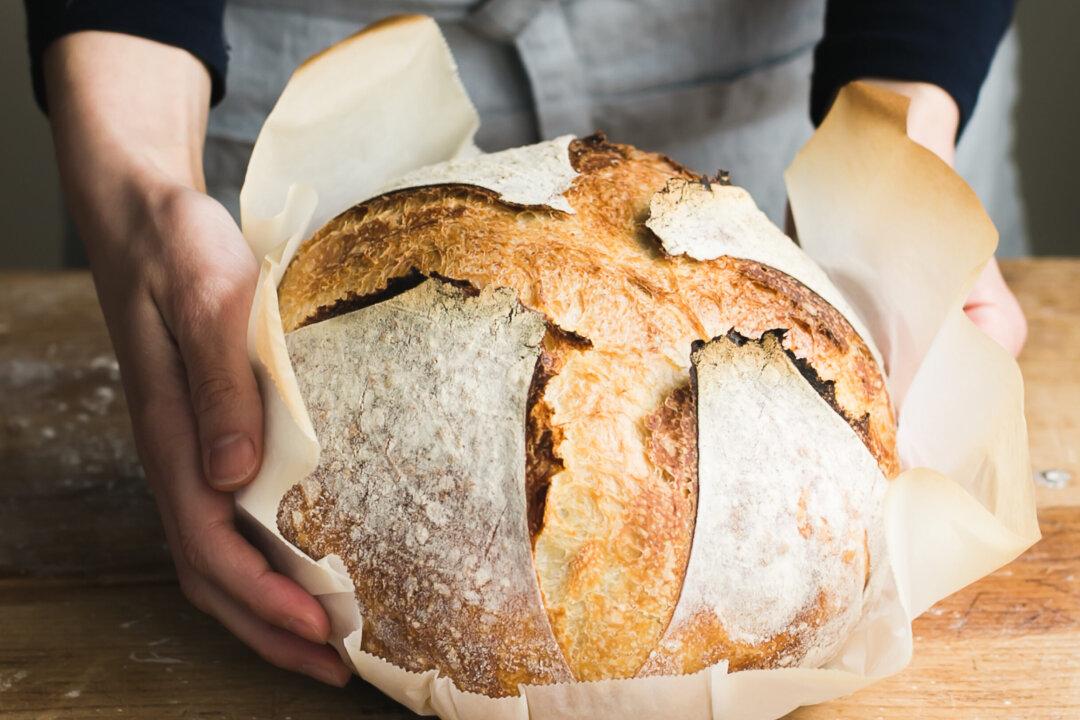Whether you are a newbie or an expert sourdough bread maker, this simple, fail-proof recipe is amazing. I’m going to break it down step-by-step with photos because if you are like me a visual is all you need to know you are on the right track. The full recipe is posted near the end of this post.
Your end product a moist, sour, crusty loaf of sourdough bread. Every loaf comes out tasting a little different and no loaf will look the same.






